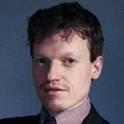Article
Simulating Spatial Experience in the People's Berkeley: The Urban Design Experiments of Donald Appleyard and Kenneth Craik
Design and Culture
(2014)
Abstract
In the early 1970s, during a period of a widespread revolt against experts of all kinds, including architects and planners, urban designer Donald Appleyard and psychologist Kenneth craik announced the development of the Environmental simulation Laboratory (ESL), which was to be a perceptual bridge between architects and various projected “users” of buildings or spaces. Employing mechanisms of Hollywood special effects, the ESL curiously combined the qualities of a populist, cinematic spectacle with the dry methodologies of social scientific research. Spectators were immersed into hyperrealistic scenes of simulated automobile drives in order to discover their aesthetic perceptions as “consumers” of urban space. In this article, I examine the theoretical and political assumptions of the ESL, especially its claims to produce a more democratic, participatory method of urban design. I argue that the ESL, in contrast to the contemporaneous experiments in People's Park, defined design participation in the relatively passive terms of individualistic visual perception.
Keywords
- Design methods,
- Design politics,
- Donald appleyard,
- Environmental design,
- Urban design
Disciplines
Publication Date
2014
Publisher Statement
SJSU users: use the following link to login and access the article via SJSU databases
Citation Information
Anthony Raynsford. "Simulating Spatial Experience in the People's Berkeley: The Urban Design Experiments of Donald Appleyard and Kenneth Craik" Design and Culture Vol. 6 Iss. 1 (2014) Available at: http://works.bepress.com/anthony_raynsford/2/
